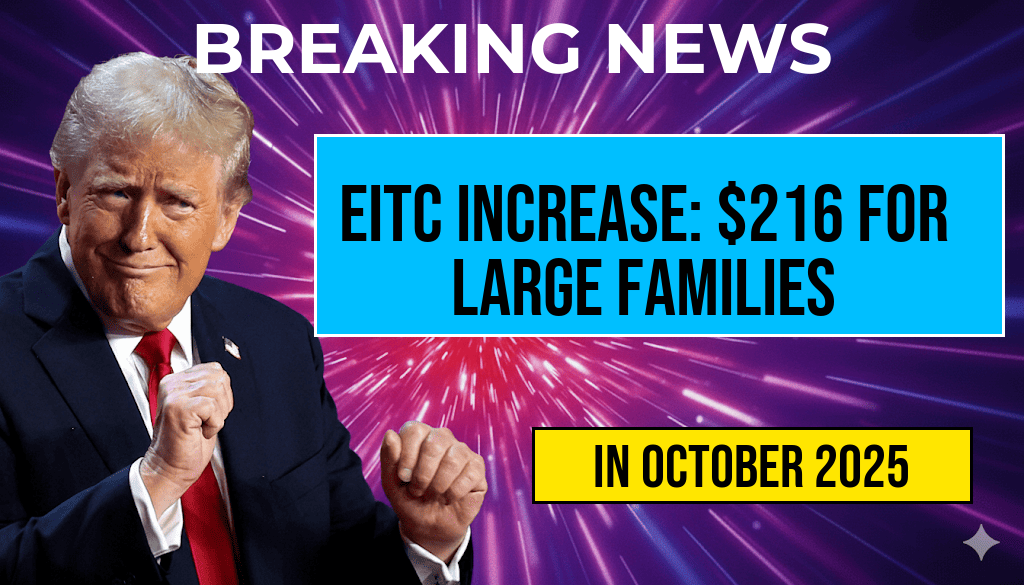The Earned Income Tax Credit (EITC) has long been a critical component of the federal social safety net, providing targeted relief to low- and moderate-income working families. Recent adjustments to the program have increased the maximum credit available, particularly benefiting families with three or more children. The new maximum EITC for eligible taxpayers now stands at $8,046, up from the previous cap of $7,830. This increase translates into an additional $216 in potential tax relief for qualifying families—an important boost that can help offset childcare costs, housing expenses, and other essentials. As policymakers continue to debate the scope of tax credits to address income inequality, the EITC remains a focal point for supporting vulnerable households, especially those with multiple dependents.
Understanding the EITC Enhancement
The federal government periodically updates the EITC parameters to reflect inflation and changing economic conditions. The recent increase, announced by the Internal Revenue Service (IRS), aims to provide more substantial support to families with three or more children, who often face higher living costs. The maximum credit for such families has risen from $7,830 in previous years to $8,046, marking a noteworthy adjustment of approximately 2.75%. This change is part of broader efforts to reduce child poverty and bolster economic stability among low-income households.
Impacts on Large Families
Families with three or more children are among the primary beneficiaries of this increase. For these households, the additional $216 can be pivotal, especially during periods of economic uncertainty or rising living expenses. The increased credit can be particularly beneficial for covering essential costs such as childcare, healthcare, and education-related expenses. According to recent analyses, the boost in the maximum EITC can contribute to lifting thousands of families out of poverty or preventing them from slipping below the poverty line.
Comparison of EITC Limits Over Time
| Year | Maximum EITC | Increase from Previous Year |
|---|---|---|
| 2023 | $7,830 | N/A |
| 2024 | $8,046 | $216 |
Eligibility and Qualification
The maximum EITC is available to taxpayers with three or more qualifying children who meet specific income thresholds and filing requirements. For the 2024 tax year, the income limit for families with three or more children ranges up to approximately $59,187 for those filing jointly, with phase-out thresholds beginning slightly above this mark. To qualify, families must also have earned income within the designated limits and meet other criteria, such as valid Social Security numbers for all dependents and filing status restrictions.
Broader Context of Social Support Programs
The increase in the maximum EITC aligns with ongoing policy debates about the role of tax credits in reducing income inequality. Advocates argue that expanding refundable credits like the EITC can significantly improve economic outcomes for low-income households, especially those with children. Critics, however, often call for more comprehensive reforms to the social safety net, including childcare subsidies and healthcare support, to address persistent disparities. The recent adjustment reflects an acknowledgment of the importance of targeted assistance in fostering economic mobility.
Implications for Taxpayers and Policymakers
Taxpayers with three or more children who qualify for the EITC should ensure they accurately report their income and dependents to maximize their credit. The IRS provides detailed guidance and tools to help filers navigate eligibility requirements, which can be found on their official website (IRS EITC information). Policymakers are watching these changes closely, weighing the benefits of increased support against fiscal considerations, especially as debates about budget allocations and social program funding continue.
Increased maximum EITC benefits serve as a reminder of the ongoing efforts to support working families facing economic hurdles. With the new cap of $8,046, eligible families with three or more children can receive a larger refund, providing some relief amid rising costs and economic uncertainty. Stakeholders emphasize that such adjustments are vital for fostering economic resilience and reducing child poverty across the country.
Frequently Asked Questions
What is the maximum EITC amount for families with three or more children?
The maximum **EITC** amount for families with **three or more children** has increased to **$8,046**, compared to the previous maximum of **$7,830**, providing an additional **$216** in benefits.
Who qualifies for the increased EITC benefit?
Families with **three or more children** who meet the income and filing requirements are eligible for the **maximum EITC** of **$8,046**, benefiting from the recent increase.
How does the new EITC maximum compare to previous years?
The new **maximum EITC** of **$8,046** represents an **increase of $216** over the previous maximum of **$7,830**, offering greater financial support to qualifying families.
Are there specific eligibility criteria to receive the increased EITC amount?
Yes, eligibility depends on factors such as **income level**, **filing status**, and the number of **qualifying children**. Families with **three or more children** who meet these criteria can receive the **maximum** benefit.
How can families claim the increased EITC benefit?
Families can claim the **EITC** when filing their federal **tax returns** using IRS forms. It’s important to ensure all **qualifying criteria** are met to receive the **additional $216** benefit for families with three or more children.






